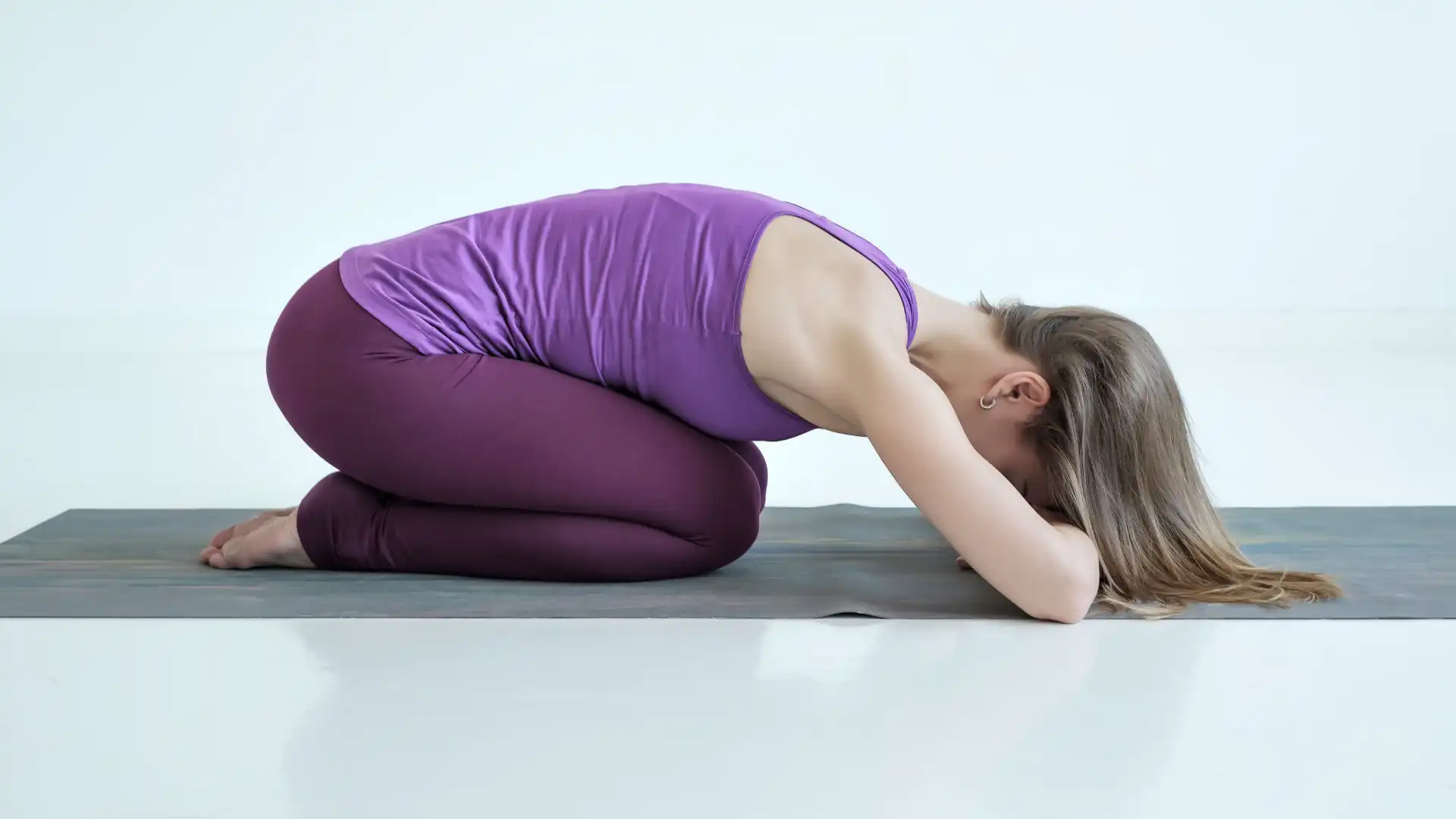Don’t Panic: How Yoga Can Help You Think Clearly in Times of Difficulty

By now, most of us are well aware of all the effects that stress can have on our bodies. For example, here are just some of the health problems that chronic stress can cause: heart disease, hypertension (high blood pressure), insomnia and/or fatigue, digestive disorders, headaches, chronic anxiety or depression, and weakened immune system.
But what about the effect that stress has on our minds?
Perhaps you’ve noticed that when you’re particularly stressed out, your mind races. That’s because your stress response prompts you to rapidly assess your current situation, considering possible outcomes and solutions. Then, when you’re more relaxed and feeling safe, your thoughts slow down, so your mind is quieter. But what’s even more important than the effects of stress on the speed of your thoughts is that stress affects the types of thoughts that you are having and the actions that you are considering. This is called your thought-behavior repertoire.
Thought-Behavior Repertoire and the Autonomic Nervous System
I learned from psychologist Dan Libby, founder of Veterans Yoga, that when we’re in stress mode (fight-or-flight state), our thought-behavior repertoire narrows, becoming limited to fight-or-flight strategies, including defend, avoid, retaliate, and escape.
On the other hand, when we are calmer, our thought-behavior repertoire expands to include a much more comprehensive range of possibilities than just fight-or-flight strategies, including more compassionate and altruistic alternatives like “How can I help?” and “What can I do to live in line with my values and goals?”

Here is how Dan Libby described it:
“The basic gist is that regulating our autonomic nervous system, which really means activating the more newly evolved part of the parasympathetic nervous system via the vagus nerve, allows for an expansion of your thought-behavior repertoire. Instead of having a limited, narrow, tunnel vision, like we do when our sympathetic nervous system is dominant, we have more cognitive and behavioral options available to navigate our world.”
Sympathetic vs. Parasympathetic Responses
In Dan’s presentation, where I learned about stress and its effects on our thought-behavior repertoire, he was talking about veterans with PTSD (post-traumatic stress disorder). But even someone who isn’t a war veteran can relate to problems that are created by high-stress thinking because we’ve all been in high-stress situations, and we know how stress can make us do things in the moment that we’re not so happy about later.
In some cases, high-stress thinking is appropriate. For example, for a soldier, a very high level of a stress response is appropriate in an actual battle because a soldier needs to be narrowly focused on defending, avoiding, retaliating, and escaping. But that same level is not appropriate while you’re stuck in a traffic jam, working at the office, taking care of young children, or trying to figure out how to “shelter in place” during a pandemic. At times like these, we want to be able to consider alternatives other than defend, avoid, retaliate, and escape. In his post, Teaching Yoga During a Pandemic, Jivana Heyman wrote about the novel coronavirus pandemic:
“The challenge here is to think of others and not just our own needs, which is the definition of karma yoga. We can consider our reaction to this challenging moment as an opportunity to practice yoga in action: to act with the benefit of others in mind.”
How Yoga Helps Reduce High-Stress Thinking
Obviously, this applies not only to the pandemic but also to all our actions in the everyday world. That’s why using yoga to reduce your stress levels is so valuable for helping you think more clearly during times of difficulty. When you practice yoga stress management techniques, you are, as Dan Libby described it, “activating the more newly evolved part of the parasympathetic nervous system via the vagus nerve” and in this more optimum state, you have “more cognitive and behavioral options available to navigate our world.” In other words, your thoughts and behavior possibilities expand to allow you to consider altruistic actions and how you can live in line with your basic values and goals.
In a recent post titled Stress Management for When You’re Stressed, I listed six different yoga tools you can use to reduce your stress. These include meditation, breath practices, Restorative Yoga, supported inversions (if appropriate for your physical condition), Savasana (Relaxation Pose), and focused relaxation (such as guided meditations).
All of these techniques work in different ways to activate the parasympathetic nervous system (the rest-and-digest side of your nervous system) via the vagus nerve. So to practice yoga for thinking clearly, you can use any of those tools that you find the most effective or that you simply like the best.

In an emergency, if you notice your thoughts are racing and are focused only on fight-or-flight strategies, I suggest you try practicing simple breath awareness, because that’s easy to do anywhere and everywhere, even standing up in a public place. All you have to do is observe your breath without changing it. And even a few minutes of practice can help center you or head off a spike in your stress levels.
A physiological phenomenon called “sinus arrhythmia” causes our heartbeat to quicken in the inhalation and to slow down on the exhalation. So you could also try consciously lengthening your exhalation while allowing your inhalation to come naturally.
Then, after you deal with your emergency, head on home, and spend at least 20 minutes doing your favorite yoga-for-stress-management poses or practices and consider doing this every day for a while. Practicing yoga for stress management will help lower your baseline stress levels, so when you do experience another spike in stress levels, you might be able to keep your cool and avoid high-stress thinking.
Also, read...
Fascia and the Vagus Nerve: Healing from the Inside Out
What Your Body Tells You Can Protect You From Stress, Study Suggests
Related courses
Breath as Medicine: Yogic Breathing for Vital Aging
Yoga and Myofascial Release: Releasing Chronic Tension with the Bodymind Ballwork Method
Yoga and Detoxification: Tips for Stimulating Lymphatic Health

Nina Zolotow, RYT 500, the author of the forthcoming book “Yoga for Times of Change” and the Editor-in-Chief of the Yoga for Healthy Aging blog, is both a yoga writer and a yoga teacher. She trained to be a yoga teacher at The Yoga Room in Berkeley, California, has studied yoga therapy with Shari Ser and Bonnie Maeda, and is especially influenced by the teachings of Donald Moyer. She also studied extensively with Rodney Yee and is inspired by the teachings of Patricia Walden on yoga for emotional healing. Her special area of expertise is yoga for emotional well-being (including yoga for stress, insomnia, depression, and anxiety). She teaches workshops and series classes on yoga for emotional well-being, stress management, better sleep, home practice, and cultivating equanimity.
Nina is the co-author with Baxter Bell of Yoga for Healthy Aging: A Guide to Lifelong Well-Being and co-author with Rodney Yee of Yoga: The Poetry of the Body (with its companion 50 Card Practice Deck) and Moving Toward Balance. She is also the author of numerous articles on yoga and alternative medicine.



